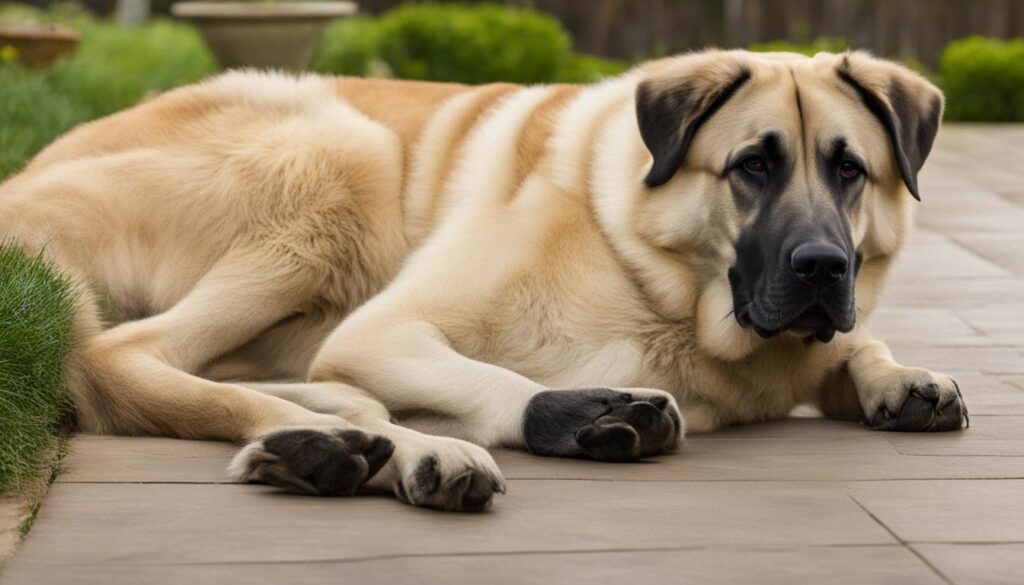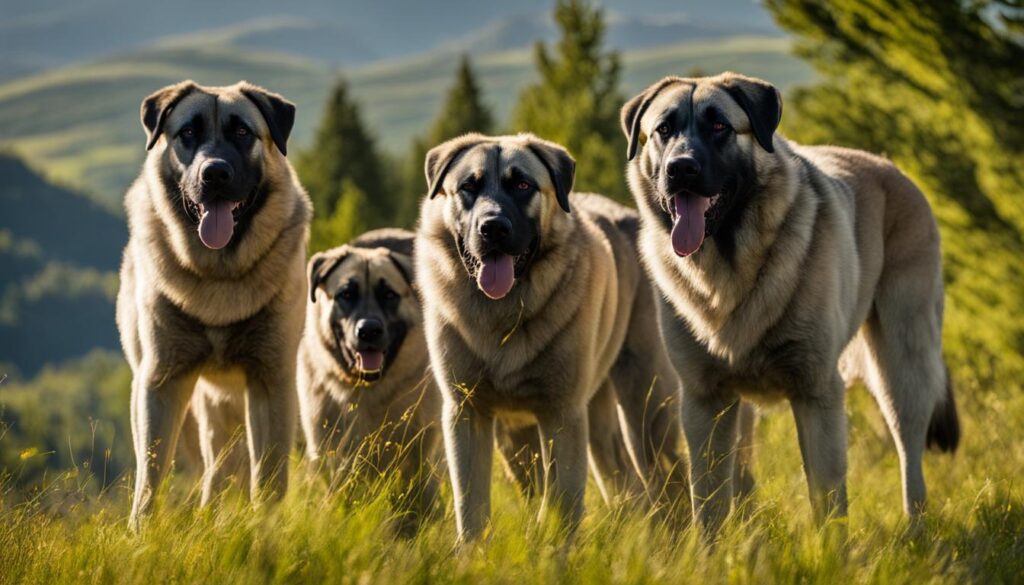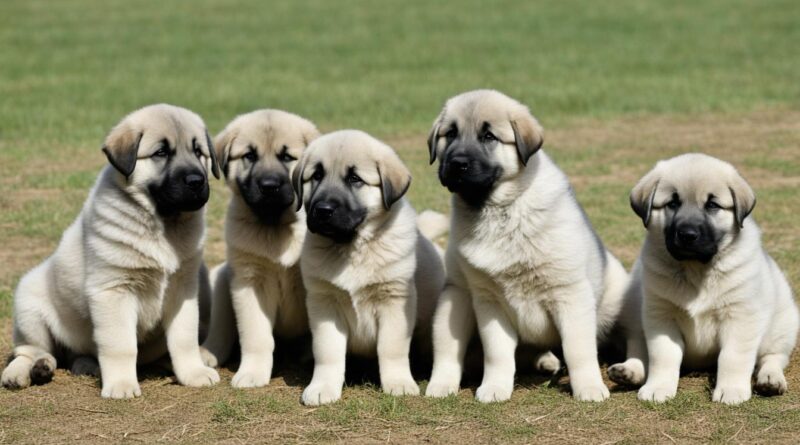Kangal Dog Price: Cost Guide for Future Owners
Welcome to our guide on the Kangal dog price! If you’re considering adding a Kangal dog to your family, it’s important to understand the cost associated with owning this majestic breed. Known for their power and loyalty, Kangal dogs make excellent guard dogs and companions. However, the price can vary depending on several factors, including breeders, pedigree, and location.
When looking to buy a Kangal dog, it’s essential to find reputable breeders who prioritize the health and well-being of their dogs. Reputable breeders invest in proper care, socialization, and health testing to ensure their Kangal puppies are raised in a loving environment. As a result, the cost may be higher, but you can have peace of mind knowing you’re getting a healthy and well-adjusted Kangal dog.
Keep in mind that the price range for Kangal dogs can vary significantly. Affordable Kangal dogs may be available, but it’s essential to research thoroughly and ask questions about the breeding practices and the health history of the dog you’re interested in.
Key Takeaways:
- Buying a Kangal dog involves considering the price range and finding reputable breeders.
- Affordable Kangal dogs may be available, but research and thorough inquiry are necessary.
- Reputable breeders prioritize the health and well-being of their Kangal puppies.
- Investing in a healthy Kangal dog from a reputable breeder may require a higher upfront cost.
- Do proper research, ask questions, and understand the cost involved before bringing home your Kangal dog.
How Big Does a Kangal Dog Get?
Kangal dogs are known for their impressive size, as they were bred to intimidate predators like wolves and bears. Males typically stand between 28 to 34 inches at the shoulder, while females are slightly smaller. Their weight can range from 90 to 150 pounds, classifying them as a large dog breed.
There are also sub-breeds within the Kangal dog family, such as the Anatolian shepherd dog. While some kennel clubs consider the Anatolian shepherd dog a separate breed, others classify it as a sub-breed of the Kangal. Compared to Anatolian shepherds, Kangals are typically larger and faster, with a shorter coat in solid tan or brown, often with a black mask and tail.
The average lifespan of a Kangal is 12 to 15 years, making them a long-lived breed.

| Gender | Height at Shoulder | Weight |
|---|---|---|
| Males | 28 to 34 inches | 90 to 150 pounds |
| Females | Slightly smaller than males | – |
“Kangal dogs are impressive in both size and strength, capable of asserting dominance and protecting their families with unwavering loyalty.”
Sub-Breeds of Kangal Dogs
- Anatolian shepherd dog: A sub-breed of the Kangal family, with similarities in appearance and temperament. However, Kangals are generally larger and more agile.
Understanding the size of Kangal dogs is crucial for those considering owning this breed. Their substantial stature requires ample space and a strong commitment to proper training and care.
How Big Are Full-Grown Kangal Dogs?
Kangal dogs reach their full size and weight as they mature, typically by 1 and a half years old. However, they continue to gain weight until they are around 2 to 3 years old. Full-grown male Kangals have an average height of 29 to 33 inches at the shoulder and weigh about 110 to 145 pounds. Female Kangals, on the other hand, have a height of 27 to 31 inches and weigh anywhere between 90 to 130 pounds. These dogs are known for their impressive size and weight, making them one of the largest dog breeds.
Here is a visual comparison of the height and weight of full-grown male and female Kangal dogs:

| Gender | Height (inches) | Weight (pounds) |
|---|---|---|
| Male | 29 – 33 | 110 – 145 |
| Female | 27 – 31 | 90 – 130 |
As you can see, male Kangals tend to be slightly larger and heavier than their female counterparts, but both genders exhibit impressive size and strength.
Factors Affecting the Size of a Kangal Dog
Like other dogs, the size of a Kangal dog can be influenced by various factors. Genetics, diet, and overall health all play a role in determining the size of these magnificent animals.
Genetics: Genetic factors significantly contribute to the size of Kangal dogs. Breeding plays a crucial role in shaping their physical attributes, including their height and weight. It’s important to obtain your Kangal from reputable breeders who prioritize responsible breeding practices to ensure the best genetic potential for size.
Diet and Nutrition: Providing a balanced and appropriate diet during the growth stages is vital for reaching a Kangal’s full genetic potential. A nutritionally complete diet can help support healthy bone and muscle development, which directly affects their size. High-quality commercial dog food or a nutritionally balanced homemade diet can provide the essential nutrients they need.
Healthcare: Regular checkups, vaccinations, and proper healthcare play a significant role in a Kangal’s overall health and size. Proper veterinary care ensures that any health issues are addressed promptly, preventing them from impacting the dog’s growth potential.
Pet Insurance: Kangal dogs, like any other breed, are susceptible to certain health conditions. Pet insurance can provide peace of mind and financial support for any unexpected medical expenses that may arise. It is essential to research and choose the right insurance plan that covers genetic and hereditary conditions specific to Kangals.
To summarize, genetics, diet, healthcare, and pet insurance are all factors that can affect the size of a Kangal dog. By understanding and addressing these factors, you can help your Kangal achieve their full size potential while ensuring their overall health and well-being.
Ideal Diet for Maintaining a Healthy Weight of Kangal Dogs
To support a healthy life for Kangal dogs, it is important to provide them with a balanced diet. This includes a mix of protein, fats, carbohydrates, vitamins, and minerals. Many owners opt for high-quality commercial dog food formulated specifically for large-breed dogs.
When choosing dog food for your Kangal, look for products that contain real meat as the main ingredient, such as chicken, beef, or lamb. Avoid foods that use fillers, by-products, or artificial additives.
Recommended brands for high-quality dog food for Kangals include:
- Blue Buffalo Wilderness
- Orijen
- Taste of the Wild
Consulting with a veterinarian is essential to develop a diet plan tailored to your Kangal’s specific needs. The vet will take into consideration factors such as the dog’s age, size, activity level, and any health issues or dietary restrictions. They may also recommend specific supplements, such as joint support for large-breed dogs.
Key Nutritional Considerations for Kangal Diet
When feeding your Kangal, it’s important to consider the following:
- Protein: Kangals require a high amount of protein to support their muscle development and overall health. Look for dog food that contains around 25-30% protein.
- Fats: Healthy fats, such as omega-3 and omega-6 fatty acids, are beneficial for a Kangal’s skin, coat, and immune system. Aim for a dog food that contains about 15-20% fat.
- Carbohydrates: While carbohydrates are not essential for dogs, they can provide energy. Look for dog food that contains wholesome carbohydrates like sweet potatoes, brown rice, or oats.
- Vitamins and Minerals: A balanced diet should contain essential vitamins and minerals for optimal health. Look for dog food that includes vitamins A, C, D, E, as well as minerals like calcium, phosphorus, and zinc.
Regular weight monitoring is crucial to maintaining a healthy weight for your Kangal. If your dog is gaining or losing weight, adjustments to the diet may be necessary. Remember to provide fresh water at all times and avoid overfeeding, as Kangals can be prone to obesity.

Providing a balanced diet with high-quality dog food is essential for maintaining the overall health and healthy weight of your Kangal. Consult with a veterinarian to ensure you are meeting your Kangal’s specific nutritional needs.
Conclusion
Owning a Kangal dog can be a truly rewarding experience. These highly regarded breeds are not only known for their protective nature but also for their unwavering loyalty. With the right training and socialization, Kangal dogs can serve as both formidable protectors and loving companions.
However, it’s important to consider the financial responsibilities associated with owning a Kangal dog. From the initial purchase price to ongoing expenses for food and medical care, the cost of owning a Kangal dog can add up. That’s why it’s wise to invest in pet insurance to cover any unforeseen veterinary costs. By ensuring you have the necessary financial support, you can provide your Kangal dog with the best care possible.
So, if you’re ready to welcome a Kangal dog into your family, remember to prioritize their well-being. Offer them proper care, including regular exercise and a balanced diet. Train them consistently and provide them with socialization opportunities. And most importantly, consider the importance of pet insurance to protect your Kangal dog and yourself from unexpected expenses. With your love and dedication, owning a Kangal dog can truly be a fulfilling and enriching journey.
FAQ
What is the price of a Kangal dog?
The price of a Kangal dog can vary depending on factors such as breeder reputation, pedigree, and location. On average, Kangal dog prices range from
What is the price of a Kangal dog?
The price of a Kangal dog can vary depending on factors such as breeder reputation, pedigree, and location. On average, Kangal dog prices range from
FAQ
What is the price of a Kangal dog?
The price of a Kangal dog can vary depending on factors such as breeder reputation, pedigree, and location. On average, Kangal dog prices range from
FAQ
What is the price of a Kangal dog?
The price of a Kangal dog can vary depending on factors such as breeder reputation, pedigree, and location. On average, Kangal dog prices range from $1,500 to $3,000. However, it’s important to note that the initial purchase price is just one expense to consider when owning a Kangal dog. Ongoing expenses for food, medical care, and potential pet insurance should also be factored into the overall cost.
Where can I buy a Kangal dog?
Kangal dogs can be purchased from reputable breeders. It’s important to do thorough research to find a breeder who prioritizes the health and well-being of their dogs. You can search online for Kangal dog breeders or consult local kennel clubs for recommendations. Additionally, rescue organizations and shelters may also have Kangal dogs available for adoption.
What are the sub-breeds of Kangal dogs?
The Kangal dog breed has sub-breeds that are closely related but may be recognized differently by different kennel clubs. One such sub-breed is the Anatolian Shepherd Dog, which is sometimes considered a separate breed. However, it’s important to note that Kangals are typically larger and have certain physical differences, such as a shorter coat and specific coloration, compared to Anatolian Shepherds.
How big does a Kangal dog get?
Kangal dogs are known for their impressive size. Males typically stand between 28 to 34 inches at the shoulder, while females are slightly smaller. Their weight can range from 90 to 150 pounds, classifying them as a large dog breed. It’s important to note that these are general size ranges, and individual Kangal dogs may vary within these ranges.
What factors affect the size of a Kangal dog?
The size of a Kangal dog can be influenced by various factors. Genetics play a role in determining their size, but nutrition and overall health also play a significant role. Providing a balanced diet and appropriate nutrition during the growth stages is crucial for achieving a Kangal’s full genetic potential. Regular checkups, vaccinations, and proper healthcare also contribute to a Kangal’s overall health and size.
What is the ideal diet for maintaining a healthy weight of Kangal dogs?
To support a healthy life for Kangal dogs, it is important to provide them with a balanced diet. This includes a mix of protein, fats, carbohydrates, vitamins, and minerals. Many owners opt for high-quality commercial dog food formulated specifically for large-breed dogs. It is recommended to consult with a veterinarian to develop a diet plan based on the dog’s age, size, and specific health needs, and to regularly monitor the dog’s weight and adjust the diet as necessary.
,500 to ,000. However, it’s important to note that the initial purchase price is just one expense to consider when owning a Kangal dog. Ongoing expenses for food, medical care, and potential pet insurance should also be factored into the overall cost.
Where can I buy a Kangal dog?
Kangal dogs can be purchased from reputable breeders. It’s important to do thorough research to find a breeder who prioritizes the health and well-being of their dogs. You can search online for Kangal dog breeders or consult local kennel clubs for recommendations. Additionally, rescue organizations and shelters may also have Kangal dogs available for adoption.
What are the sub-breeds of Kangal dogs?
The Kangal dog breed has sub-breeds that are closely related but may be recognized differently by different kennel clubs. One such sub-breed is the Anatolian Shepherd Dog, which is sometimes considered a separate breed. However, it’s important to note that Kangals are typically larger and have certain physical differences, such as a shorter coat and specific coloration, compared to Anatolian Shepherds.
How big does a Kangal dog get?
Kangal dogs are known for their impressive size. Males typically stand between 28 to 34 inches at the shoulder, while females are slightly smaller. Their weight can range from 90 to 150 pounds, classifying them as a large dog breed. It’s important to note that these are general size ranges, and individual Kangal dogs may vary within these ranges.
What factors affect the size of a Kangal dog?
The size of a Kangal dog can be influenced by various factors. Genetics play a role in determining their size, but nutrition and overall health also play a significant role. Providing a balanced diet and appropriate nutrition during the growth stages is crucial for achieving a Kangal’s full genetic potential. Regular checkups, vaccinations, and proper healthcare also contribute to a Kangal’s overall health and size.
What is the ideal diet for maintaining a healthy weight of Kangal dogs?
To support a healthy life for Kangal dogs, it is important to provide them with a balanced diet. This includes a mix of protein, fats, carbohydrates, vitamins, and minerals. Many owners opt for high-quality commercial dog food formulated specifically for large-breed dogs. It is recommended to consult with a veterinarian to develop a diet plan based on the dog’s age, size, and specific health needs, and to regularly monitor the dog’s weight and adjust the diet as necessary.
Where can I buy a Kangal dog?
Kangal dogs can be purchased from reputable breeders. It’s important to do thorough research to find a breeder who prioritizes the health and well-being of their dogs. You can search online for Kangal dog breeders or consult local kennel clubs for recommendations. Additionally, rescue organizations and shelters may also have Kangal dogs available for adoption.
What are the sub-breeds of Kangal dogs?
The Kangal dog breed has sub-breeds that are closely related but may be recognized differently by different kennel clubs. One such sub-breed is the Anatolian Shepherd Dog, which is sometimes considered a separate breed. However, it’s important to note that Kangals are typically larger and have certain physical differences, such as a shorter coat and specific coloration, compared to Anatolian Shepherds.
How big does a Kangal dog get?
Kangal dogs are known for their impressive size. Males typically stand between 28 to 34 inches at the shoulder, while females are slightly smaller. Their weight can range from 90 to 150 pounds, classifying them as a large dog breed. It’s important to note that these are general size ranges, and individual Kangal dogs may vary within these ranges.
What factors affect the size of a Kangal dog?
The size of a Kangal dog can be influenced by various factors. Genetics play a role in determining their size, but nutrition and overall health also play a significant role. Providing a balanced diet and appropriate nutrition during the growth stages is crucial for achieving a Kangal’s full genetic potential. Regular checkups, vaccinations, and proper healthcare also contribute to a Kangal’s overall health and size.
What is the ideal diet for maintaining a healthy weight of Kangal dogs?
To support a healthy life for Kangal dogs, it is important to provide them with a balanced diet. This includes a mix of protein, fats, carbohydrates, vitamins, and minerals. Many owners opt for high-quality commercial dog food formulated specifically for large-breed dogs. It is recommended to consult with a veterinarian to develop a diet plan based on the dog’s age, size, and specific health needs, and to regularly monitor the dog’s weight and adjust the diet as necessary.
,500 to ,000. However, it’s important to note that the initial purchase price is just one expense to consider when owning a Kangal dog. Ongoing expenses for food, medical care, and potential pet insurance should also be factored into the overall cost.
Where can I buy a Kangal dog?
Kangal dogs can be purchased from reputable breeders. It’s important to do thorough research to find a breeder who prioritizes the health and well-being of their dogs. You can search online for Kangal dog breeders or consult local kennel clubs for recommendations. Additionally, rescue organizations and shelters may also have Kangal dogs available for adoption.
What are the sub-breeds of Kangal dogs?
The Kangal dog breed has sub-breeds that are closely related but may be recognized differently by different kennel clubs. One such sub-breed is the Anatolian Shepherd Dog, which is sometimes considered a separate breed. However, it’s important to note that Kangals are typically larger and have certain physical differences, such as a shorter coat and specific coloration, compared to Anatolian Shepherds.
How big does a Kangal dog get?
Kangal dogs are known for their impressive size. Males typically stand between 28 to 34 inches at the shoulder, while females are slightly smaller. Their weight can range from 90 to 150 pounds, classifying them as a large dog breed. It’s important to note that these are general size ranges, and individual Kangal dogs may vary within these ranges.
What factors affect the size of a Kangal dog?
The size of a Kangal dog can be influenced by various factors. Genetics play a role in determining their size, but nutrition and overall health also play a significant role. Providing a balanced diet and appropriate nutrition during the growth stages is crucial for achieving a Kangal’s full genetic potential. Regular checkups, vaccinations, and proper healthcare also contribute to a Kangal’s overall health and size.
What is the ideal diet for maintaining a healthy weight of Kangal dogs?
To support a healthy life for Kangal dogs, it is important to provide them with a balanced diet. This includes a mix of protein, fats, carbohydrates, vitamins, and minerals. Many owners opt for high-quality commercial dog food formulated specifically for large-breed dogs. It is recommended to consult with a veterinarian to develop a diet plan based on the dog’s age, size, and specific health needs, and to regularly monitor the dog’s weight and adjust the diet as necessary.


